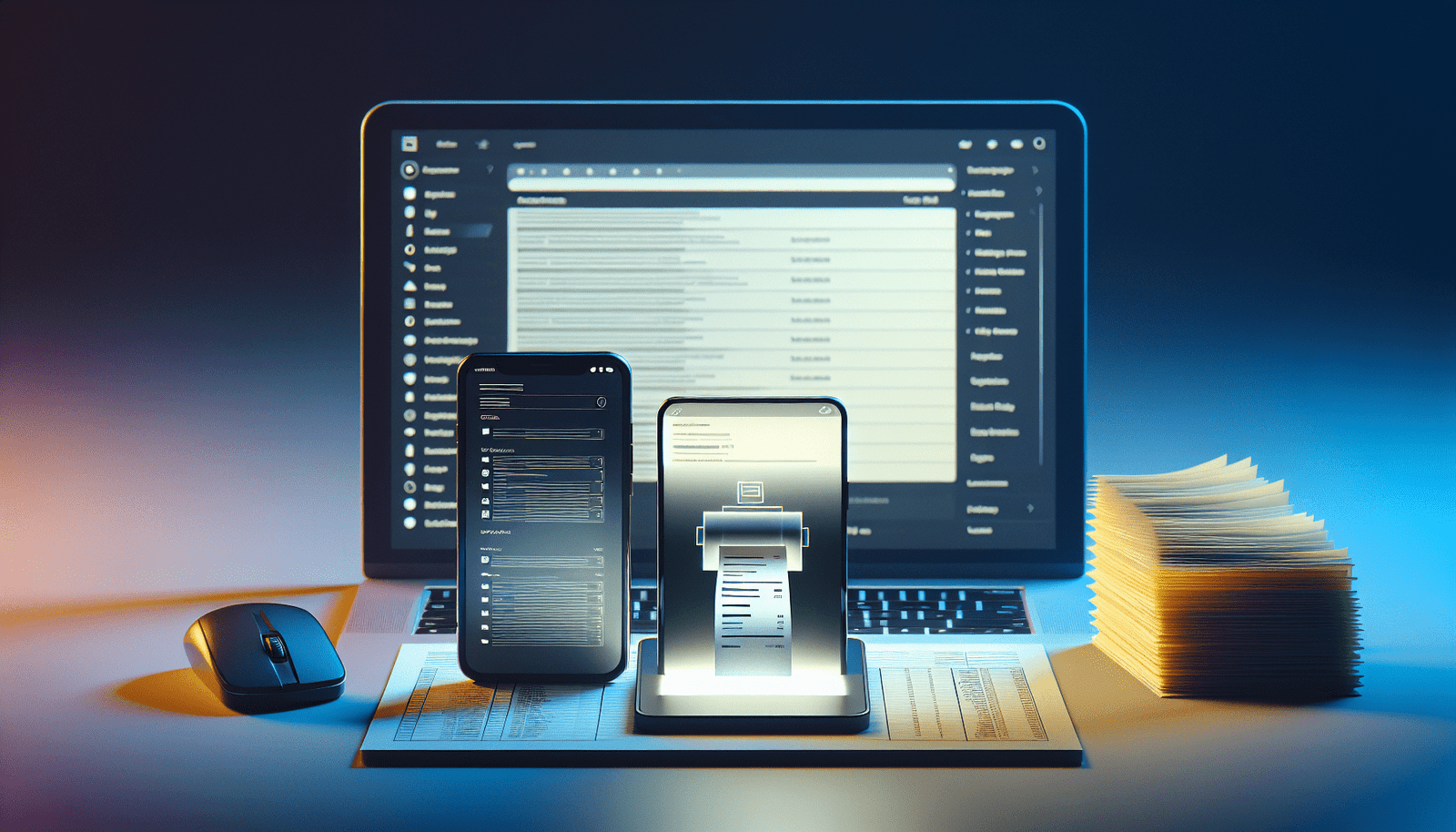Have you ever found yourself drowning in a sea of papers, desperately searching for that elusive receipt, only to realize you might have accidentally disposed of it? In the digital age where organization and easy access are at the forefront of efficiency, maintaining digital records of your receipts is no longer just an option but a necessity. This essential practice not only elevates personal and professional productivity but also ensures that you are equipped with financial transparency and preparedness for any financial scrutiny.
Understanding the Importance of Digital Receipt Management
Digital receipt management offers invaluable advantages, allowing you streamline your record-keeping processes and ensure that your expenses are always accounted for. By maintaining digital records, you can easily access and analyze your spending habits, ensuring compliance with financial obligations and simplifying tax preparation.
The Advantages of Digital Over Paper
Unlike physical receipts, digital records are immune to fading and loss due to mishandling. Digital receipt management also enhances organization by allowing you to categorize your receipts, facilitating easier retrieval when needed. Furthermore, it ensures confidentiality as digital receipts can be securely stored and accessed only by authorized individuals.
Promoting Sustainability
By reducing reliance on paper receipts, you contribute towards environmental conservation. Digital documentation also minimizes clutter, creating a more efficient and effective home or office environment.
Fundamental Strategies for Storing Digital Receipts
Digitizing receipts involves more than just capturing an image; it requires a strategic approach to categorize, store, and protect these documents.
Organizing Your Digital Storage
Organize your receipts using a hierarchical folder system. For instance, have broad categories such as “Work Expenses” and “Personal Expenses,” further broken down into specific categories like “Meals,” “Travel,” and “Office Supplies.” This structured organization allows for quick retrieval and easy reference.
| Category | Subcategory | Example |
|---|---|---|
| Work Expenses | Meals | Dinner with client |
| Travel | Flight to conference | |
| Office Supplies | Printer ink purchase receipt | |
| Personal Expenses | Groceries | Weekly supermarket run |
| Entertainment | Concert tickets |
Utilizing Cloud Storage Solutions
Employ cloud-based services like Dropbox, Google Drive, or OneDrive to store your receipts securely online. These platforms offer reliable backup solutions, ensuring that your data remains intact even in case of electronic failure. Choose a service based on available storage, security features, and accessibility to suit your needs.
Selecting the Right Receipt Scanning Tools
There are numerous apps and services available specifically designed for scanning receipts. Opt for applications that offer optical character recognition (OCR) technology, which extracts text from receipts, allowing for easy searching and categorization. Popular apps include Expensify, Evernote Scannable, and Adobe Scan.
Ensuring the Security of Your Digital Records
Protection of digital records is paramount. Sensitive financial information must remain secure against unauthorized access and cyber threats.
Establishing Digital Security Measures
- Password Protection: Implement strong, unique passwords for all accounts storing digital receipts.
- Two-Factor Authentication: For added security, enable two-factor authentication on all your digital storage and scanning apps.
- Regular Backups: Perform regular backups of your digital records to an external hard drive or another secure cloud service to protect against data loss.
Legal Compliance and Data Integrity
Ensure your digital record-keeping complies with relevant laws and regulations, such as Data Protection Laws in your jurisdiction. Keep records as required by taxation laws (commonly 5-7 years) and ensure you have processes in place to authenticate the integrity of your digital records.
Transitioning from Paper to Digital
Fully transitioning from a paper-based record-keeping system to a digital one requires a clear plan and dedicated commitment to restructuring how you maintain your financial records.
Implementing a Hybrid Approach
Initially, consider adopting a hybrid approach where both digital and paper records are maintained simultaneously. Gradually reduce reliance on paper as you become more comfortable and confident with digital storage solutions.
Daily Practices to Adopt
- Scan Immediately: Develop a habit of scanning receipts as soon as you receive them to ensure nothing is misplaced or forgotten.
- Regular Maintenance: Dedicate a specific time each week to organize and verify your digital receipts, ensuring all entries are accurate and up to date.
Overcoming Challenges in Digital Receipt Management
While the advantages are substantial, transitioning to digital receipt management does present certain challenges that need to be addressed.
Tackling Technical Hurdles
Technology can be fickle, but being prepared can mitigate disruptions. Maintain your software and equipment regularly to ensure optimal performance and quick recovery from technical issues.
Addressing Personal and Professional Resistance
Overcome resistance by educating yourself on the benefits of digital receipt management and sharing this knowledge with relevant stakeholders. Highlighting the cost savings and efficiency gained through digital practices may assist in driving consensus toward a digital transition.
Evaluating and Improving Your Digital Receipt Strategy
Maintaining digital records is an ongoing process that requires regular evaluation and potential refinement to enhance its effectiveness.
Metrics for Assessment
- Access Efficiency: How quickly and easily can you retrieve specific receipts when needed?
- Data Accuracy: Are your digital records consistent and free from errors?
- System Reliability: Are your records properly backed up, and can they be restored quickly in an emergency?
Continuous Improvement
Regularly review your strategy to identify areas for improvement. Stay informed on technological advancements and integrate new tools and practices that further enhance your record-keeping efficiency and productivity.
Conclusion
The ability to efficiently manage digital records of receipts is a critical skill in our increasingly digital world. By developing solid organizational structures, utilizing advanced technologies, and prioritizing security, you enable more efficient financial oversight and improved decision-making. The shift to digital receipt management might initially seem daunting, yet it is a transformative step toward achieving streamlined, reliable, and accessible financial record-keeping.
